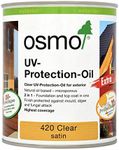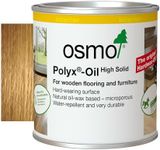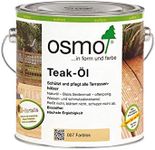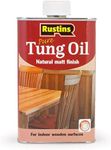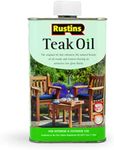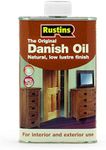Buying Guide for the Best Furniture Oil
Choosing the right furniture oil is essential to maintain and enhance the beauty and longevity of your wooden furniture. Furniture oil not only protects the wood from drying out and cracking but also brings out its natural grain and color. When selecting a furniture oil, consider the type of wood, the desired finish, and the level of protection you need. Here are some key specifications to help you make an informed decision.Type of OilThe type of oil is crucial because different oils offer varying levels of protection and finish. Common types include linseed oil, tung oil, and mineral oil. Linseed oil is great for a natural finish and deep penetration, making it ideal for antique furniture. Tung oil provides a durable, water-resistant finish, suitable for high-use furniture. Mineral oil is often used for cutting boards and butcher blocks due to its food-safe properties. Choose the type based on the specific needs of your furniture.
Drying TimeDrying time refers to how long the oil takes to cure and harden on the wood surface. This is important because it affects how soon you can use the furniture after application. Fast-drying oils like tung oil can be ready in a few hours, while others like linseed oil may take several days. If you need a quick turnaround, opt for a fast-drying oil. For a more thorough and deep finish, a slower-drying oil might be preferable.
FinishThe finish is the final appearance and texture of the wood after the oil has been applied. Some oils provide a glossy finish, while others offer a matte or satin look. A glossy finish can make the wood look more polished and is often used for decorative pieces. A matte or satin finish gives a more natural and understated look, suitable for rustic or antique furniture. Consider the aesthetic you want to achieve when choosing the finish.
Application MethodThe application method can vary depending on the oil. Some oils are easy to apply with a cloth, while others may require a brush or even multiple coats. Ease of application is important if you are a DIY enthusiast or if you plan to maintain the furniture regularly. If you prefer a straightforward process, look for oils that are easy to apply and require minimal tools.
Protection LevelThe level of protection refers to how well the oil guards the wood against moisture, stains, and wear. High-protection oils are ideal for furniture that will be used frequently or exposed to harsh conditions. For example, tung oil offers excellent water resistance, making it suitable for outdoor furniture. If the furniture is more decorative and less exposed to wear and tear, a lighter oil like linseed oil might suffice. Assess the environment and usage of your furniture to determine the necessary protection level.

